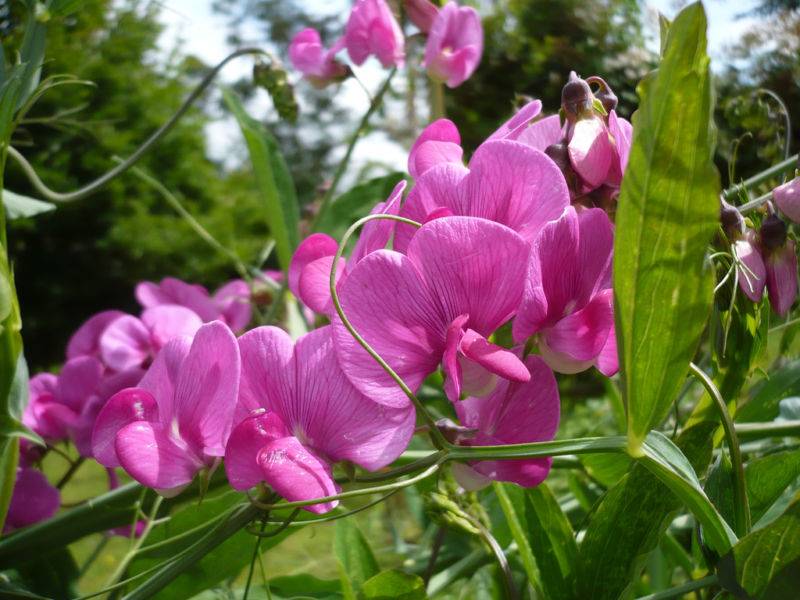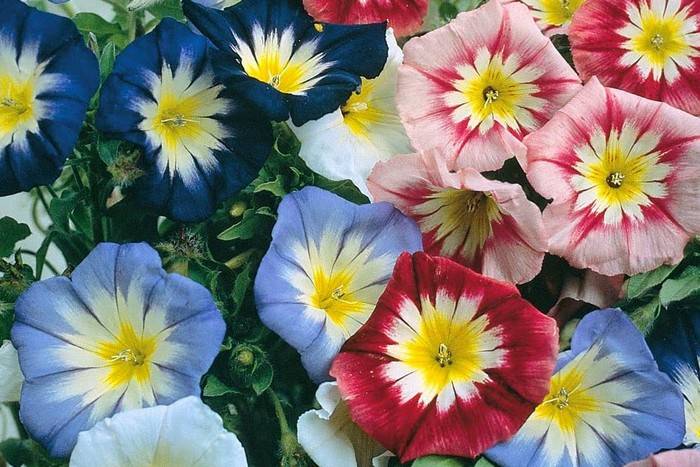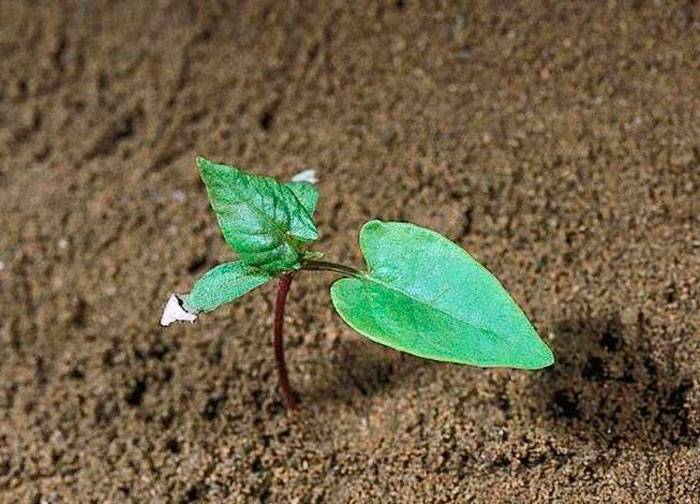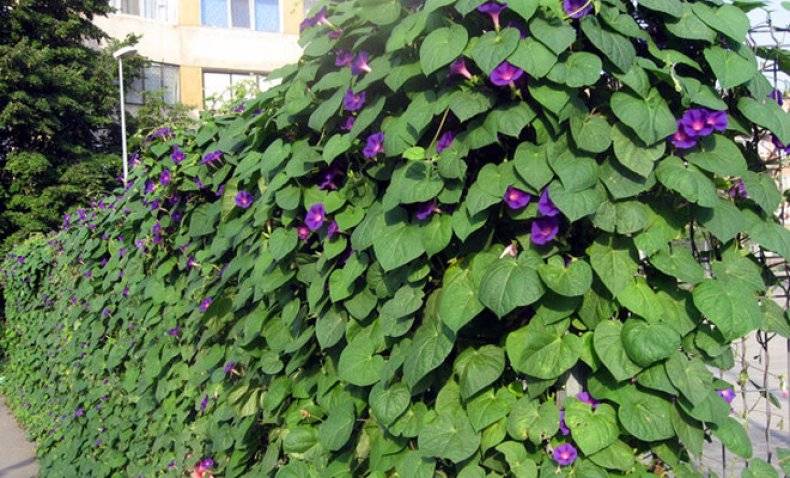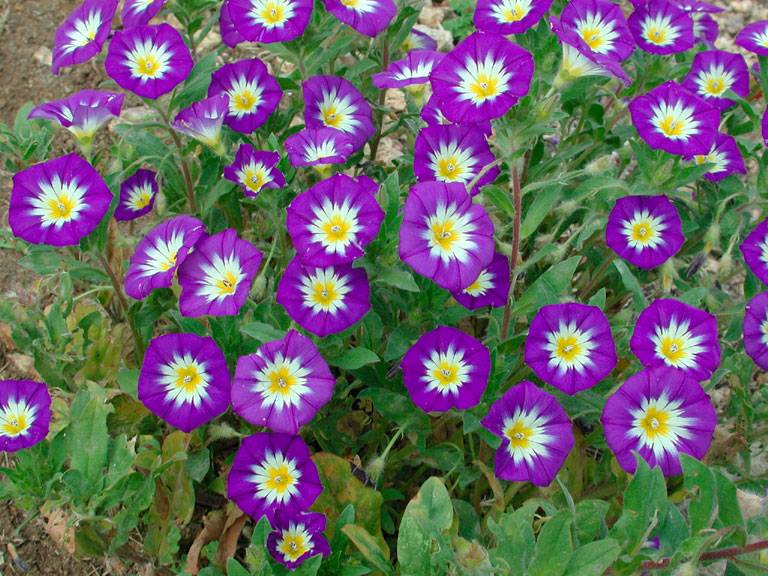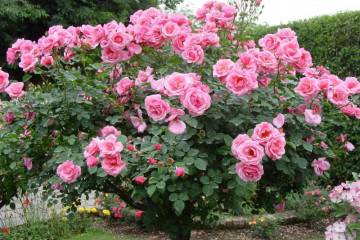Bindweed flower - decorative bindweed for growing in the garden
Content:
Loach is a flower, a popular plant that can decorate any site. Grows in regions with tropical climates or in the subtropics. The most common option is the field bindweed, which is the most unpretentious to care for.
Features of loaches
Today, there are many beautiful varieties of flowers that can be grown in the garden or indoor conditions. Each of them has certain features.
Briefly about the history of appearance
The scientific name of the genus comes from the Latin word, which means "fold". This name explains the need for many species to twine around other crops. Bindweed uses them as a support.
The history of the use of culture dates back to the time of Avicenna. The famous doctor advised using the plant to fight asthma, lesions of the spleen, liver, lungs.
Plant characteristics
Bindweed are perennial or annual plants. They can have shoots ranging in length from 50 cm to several meters. Loaches are flowers with creeping or curly shoots covered with arrow-shaped or heart-shaped leaves.
The plant has a rich color and helps to create a real carpet on the site. The culture begins to bloom on small peduncles. The inflorescences open in good weather and close on cloudy days.
Classification of garden loaches
There are several types of loaches. Each of them has its own characteristics.
- climbing. They can do without special supports. They require a vertical wall that has a rough surface;
- clinging with hooks. Bindweed can cling to various surfaces with special hooks. This allows for a thick coverage;
- climbing with antennae. Plants are considered an interesting option, with special antennae helping to trail. They thrive on rough surfaces;
- clinging to suction cups. The bindweed can weave its nets using special suction cups. Thanks to this, it forms a thick and dense coating;
- curly. Loaches that have curling shoots look interesting;
- creeping. Perennial loaches, which have creeping shoots, will be an excellent solution for decorating the garden.
Types of garden bindweed
There are quite a few loaches, they differ in appearance and growing conditions.
Bindweed (Convolvulus Mauritanicus)
It is one of the more spectacular plants to be grown in hanging pots. The flower helps to create picturesque cascades and beautiful carpets. The culture is characterized by flexible shoots that grow up to 50 cm. They are rather branched. It is a fast growing shrub that is able to cover the ground with a thick carpet.
Bindweed (Convolvulus fischerianus)
This bindweed is a wild species. It is often found in Siberia and the Caucasus. The plant is characterized by naturalness and discreet beauty. The shoots of the culture twist only slightly. They lie or slightly rise by 30-40 cm. The arrow-shaped foliage reaches 6 cm and has a beautiful appearance.
Tricolor bindweed (Convolvulus minor)
Bindweed tricolor has very dense branches. It is a herbaceous annual plant. The tricolor culture grows up to 50 cm and has many thin and flexible shoots. They are complemented by oval leaves.
Varieties that are in great demand among gardeners
Bindweed have many varieties that can be planted on site or grown at home:
- Krimzon Monarch. This variety is characterized by crimson inflorescences;
- Blue Flash. This is a blue culture that reaches 25 cm;
- Royal Ensign. This culture is characterized by dark blue inflorescences and golden throat. Shoots reach 45 cm.
Features of planting bindweed
To grow a garden bindweed, you need to provide it with the right conditions. Most varieties of culture are unpretentious in care.
Boarding time
It is recommended to plant the plant in warm weather, when the threat of recurrent frosts has passed. At this point, you can plant the plant in open ground. This is usually done in mid-May. Sometimes planting work is postponed to early summer.
Site preparation
To prepare the site, you need to dig it up and add 2-3 kg of peat per 1 m². Then the bed should be leveled. Before planting, the seedlings should be well watered and holes made at a distance of 20 cm from each other. It is recommended to plant a loach by transshipment. It will be possible to achieve flowering in the first year.
Features of care in the garden
To succeed in growing perennial climbing flowers for the garden, a number of conditions must be observed.
It is worth planting a plant in a sunny area. This will ensure a beautiful and lush bloom. The soil should be loose.
What is the plant afraid of
Bindweed is resistant to most diseases. But sometimes it can suffer from the development of powdery mildew. Bordeaux liquid will help to cope with it. When the culture of aphids is damaged, Aktara or Actellic is used.
Watering
Perennial curly flowers require high-quality watering. The soil should be moistened systematically. In this case, it is important to avoid liquid stagnation. With a lack of moisture, the culture will begin to shed its buds.
Mulching
This procedure helps to retain moisture and prevent weed growth. Peat or sawdust can be used as mulch.
Loosening
Systematic loosening of the soil will help to saturate it with oxygen and nutrients. The procedure should be carried out after each watering.
Top dressing
Organic remedies work best for the flower. During the flowering period, it is worth using complex fertilizers. It is recommended to make them once a month.
Transfer
When a culture is planted in an unsuitable place, a transplant is carried out. The procedure should be carried out very carefully by transshipment.
Pruning
In order to form a beautiful crown, it is necessary to carry out pruning in a timely manner, while it is important to adhere to the schedule.
Preparing for winter
There are winter-hardy plant varieties. If the culture is not frost-resistant, it is recommended to dig it up and move it to a pot. The plant should be kept in a bright room. In the spring, it can be planted again in the ground.
When and how it blooms
The plant is distinguished by lush and abundant flowering. Each of the varieties has certain characteristics.
Types of flowers
There are several types of climbing plants:
- clematis has beautiful inflorescences and can form a thick wall;
- morning glory is an annual crop that can reach 4 m during the season;
- beans. It is characterized by bright and abundant flowering.
Flower shapes
Flowers can resemble a funnel or bell in shape. It all depends on the type of culture.
Flowering period
The plant begins to bloom in June and decorates the garden until the frost.
Changes in care during flowering
During the flowering period, the culture must be carefully fed and watered. Withered inflorescences can not be removed.
Possible growing problems
When cultivating a plant, there is a risk of various problems. In such a situation, you need to take action in time.
Pests
The flower can suffer from attacks by spider mites. This happens in dry and hot weather. The parasites feed on the sap of the plant and can lead to its death. To cope with pests, you need to remove damaged leaves and treat the flowers with acaricides.
Diseases
The culture is resistant to disease. However, she may suffer from the development of powdery mildew. The disease develops with excess moisture and is accompanied by the appearance of plaque on the foliage. To cope with the disease, it is worth spraying the culture with a fungicide.
Signs of improper care
The following signs indicate violations of agrotechnical recommendations:
- yellowing of the leaves;
- insufficient flowering;
- decay of culture;
- dying off of stems.
Other types of perennial climbing plants
Today there are many varieties of climbing plants, each of which has certain characteristics:
- actinidia. This climbing loach is often used in landscaping. It is used to decorate fences, arches, arbors. Variegated varieties are especially popular;
- ampelopsis. This loach has excellent properties. It has beautifully carved leaves and berries of various colors;
- grapes. Cultivated grape varieties are often used to decorate fences, pergolas, hedges. They need quality support;
- wisteria. This culture is characterized by abundant and long flowering. It is considered to be very thermophilic, therefore it grows well in the Crimea and the Caucasus;
- hydrangea. It is one of the most beautiful flowers and has beautiful inflorescences. Some of its varieties are sturdy lianas that can be grown in windy areas;
- wood-nose pliers. The most popular varieties are climbing, round-leaved, curly. The culture practically does not need care and retains its properties for a whole year;
- dioscorea. The plant is considered thermophilic, therefore it needs high-quality shelter. The crop requires plenty of sun and moderate watering;
- blackberry. This shrub is used to decorate the perimeter of the site. It is important that the thorny shoots receive a lot of sun;
- honeysuckle. It is an attractive perennial, which is actively used to decorate arches, fences, and arbors. The vine has a delicate aroma;
- Kampsis. This tree-like liana has a spreading shape. Its bloom begins in mid-summer and lasts 2 months;
- Kirkazon. Perennial street loach is a flower that is perfect for decorating large horizontal surfaces;
- lemongrass. The plant not only has excellent decorative properties, but is also a medicinal crop. Lemongrass needs abundant watering;
- clematis. This is one of the most beautiful loaches. It is actively used in vertical gardening. This requires a thin support;
- ivy. These are evergreen loaches, which are distinguished by their rapid growth. They are characterized by the presence of sucker roots that grab onto any surface;
- roses. Such plants are able to decorate any area. Moreover, they need high-quality and stable support.
Loach is an ornamental plant that has many species and varieties. To succeed in growing it, proper care is required.

